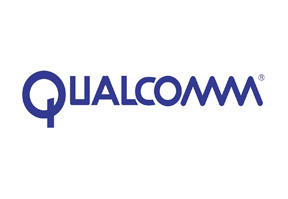Qualcomm Incorporated has announced that its subsidiary, Qualcomm Technologies, Inc. (QTI), has added the Qualcomm® Snapdragon™ X12 LTE modem (9×40) and Qualcomm® Snapdragon™ X5 LTE modem (9×28) to Snapdragon Automotive Solutions to support connectivity across all tiers of the automotive industry. The Snapdragon X12 LTE modem (9×40) is designed to enable auto manufacturers to develop next-generation systems with advanced telematics and connected infotainment features while supporting greater coverage at download speeds up to Category 10 (up to 450 Mbps in the downlink and 100 Mbps in the uplink). The Snapdragon X5 LTE modem (9×28) is designed to enable automakers to broadly deploy LTE in all cars at download speeds up to Category 4 (up to 150 Mbps in the downlink and 50 Mbps in the uplink).
In addition to leading LTE features, these multimode modems provide support for all major 3G/2G cellular standards, on-chip integration of global position (GNSS) support for all major constellations, and a 1 GHz processor with Linux and built-in software for key global regulatory mandates like EU eCall and ERA Glonass. The Snapdragon X12 and X5 LTE modems for automotive inter-work with a companion Qualcomm® VIVE™ QCA65x4 chipset with superior Wi-Fi/BT to support consumer features like Wi-Fi 802.11ac hotspots and safety applications like vehicle-to-vehicle (V2V) and vehicle-to-infrastructure (V2I) with a seamless combination of Wi-Fi, DSRC and LTE. The Snapdragon X12 modem is sampling now and Snapdragon X5 LTE modem is expected to sample in 2H, 2015.
“With smartphone connectivity setting the pace for advanced features, consumers expect the same experience from all other connected devices, including their car,” said Kanwalinder Singh, senior vice president of business development for Qualcomm Technologies, Inc. “Qualcomm Technologies already supports first-generation LTE connected cars with major automakers. We are now pressing ahead with the vision of LTE for all automakers, cars, geographies and models with the leading performance of the X12 and the leading value of the X5.”
The Snapdragon X12 LTE modem (9×40) supports Carrier Aggregation (CA) across global TDD and FDD radio frequency bands. It is QTI’s latest and most advanced LTE modem in the 20nm technology node and supports up to 60 MHz 3x CA in the downlink and up to 40 MHz 2x CA in the uplink. Separately, the Snapdragon X5 LTE modem (9×28) supports Category 4 across global TDD and FDD radio frequency bands, and is based on the 28 nm technology node.
Both the Snapdragon X12 and X5 LTE modems support the major cellular standards, including LTE, DC-HSPA, EVDO, CDMA 1x, GSM and TD-SCDMA, support the major RF bands and band combinations, and provide global position support for major constellations including GPS, Beidou, Glonass and Galileo for enhanced automotive navigation. Additionally, the modems feature integrated support for VoLTE and key new automotive regulatory safety features such as EU eCall and ERA Glonass. In both chipsets, a Cortex A7 is integrated to provide bill of materials (BOM) cost savings for hosting automotive telematics applications.
“The effect of LTE on connected telematics and infotainment inside the car is transformational, rivaling the one from feature phones to smartphones,” added Singh. “Ubiquitous connectivity to cars is enabling industries like automotive, wireless operators, and insurance to come together in unlocking value for consumers. In addition, the cars of tomorrow will not only inform and entertain the consumer, but also communicate with their environment to make driving safer, which is accomplished through system level integration across infotainment, telematics and connectivity subsystems of the vehicle. The X12 and X5 are designed with this integration as a requirement, so we can support the vision of getting these capabilities into all cars.”
Snapdragon X12 LTE and X5 LTE modems inter-work with QCA6574A, a dual-stream 802.11ac Wi-Fi® and Bluetooth 4.1 chipset, to support in-car Wi-Fi hotspot functions and Bluetooth profiles, and the QCA6584, which also supports DSRC (dedicated short-range communications). DSRC will be required to comply with future regulations recently announced by the National Highway Traffic Safety Administration (NHTSA) to increase safety through vehicle-to-vehicle (V2V) communication. The Snapdragon X12 LTE modem, Snapdragon X5 LTE modem and QCA6574 will also be pre-integrated with Qualcomm Technologies’ automotive-grade Snapdragon 602A infotainment processor.










